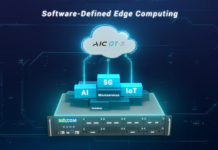
Dedicated Bot Management solutions are essential; there’s why…
“Bad” bots now constitute one of the gravest threats to businesses. Malicious bot traffic can degrade website performance, tie up online inventory, compromise personal data and lead to increased customer turnover/loss of revenue. By targeting websites, mobile applications and APIs, they cause an array of business problems, such as account takeover, application DDoS, API abuse, web scraping, spam creation, skewed analytics and ad fraud.
Alternatively, good bots assist in the growth and development of the web. They crawl site pages to determine SERP rankings and keep real-time websites updated with data or help consumers find the best price for a product or discover stolen content.
Being able to distinguish between good and bad bots is imperative for today’s businesses. According to Radware’s Web Application Security Report, 79 percent of businesses cannot accurately distinguish between good and bad bots.
The escalating intensity of global bot traffic and the increasing severity of its overall impact mean that dedicated bot management solutions are crucial to ensuring business continuity and success. This is particularly true since more sophisticated bad bots can now mimic human behavior and easily deceive conventional cybersecurity solutions/bot management systems.
Building and maintaining an in-house bot mitigation solution are resource intensive and require ongoing tuning and exception handling to avoid false positives but are beyond the capabilities of all but the largest organizations. Leading analyst organizations such as Forrester Research and Gartner are increasingly underscoring the need for bot management solutions for organizations of all sizes.
Few resources exist to help companies evaluate bot mitigation solutions, and there is even less of a consensus as to which features and capabilities security specialists should look for when evaluating a solution.
EVALUATION CRITERIA
Addressing highly sophisticated and automated bot-based cyberthreats requires deep analysis of bots’ tactics and intentions. According to Forrester Research’s The Forrester New Wave™: Bot Management, Q3 2018 report, “Attack detection, attack response and threat research are the biggest differentiators. Bot management tools differ greatly in their detection methods; many have very limited — if any — automated response capabilities. Bot management tools must determine the intent of automated traffic in real time to distinguish between good bots and bad bots.”
When selecting a bot mitigation solution, companies must evaluate the following criteria to determine which best fit their unique needs.
Basic Bot Management Features
Organizations should evaluate the range of possible response actions — such as blocking, limiting, the ability to outwit competitors by serving fake data and the ability to take custom actions based on bot signatures and types. Any solution should have the flexibility to take different mitigation approaches on various sections and subdomains of a website, and the ability to integrate with only a certain subset of from pages of that website Additionally, any enterprise-grade solution should be able to be integrated with popular analytics dashboards such as Adobe or Google Analytics to provide reports on nonhuman traffic.
Capability to Detect Large-Scale Distributed Humanlike Bots
When selecting a bot mitigation solution, businesses should try to understand the underlying technique used to identify and manage sophisticated attacks such as large-scale distributed botnet attacks and “low and slow” attacks, which attempt to evade security countermeasures.
The rise of highly sophisticated humanlike bots in recent years requires more advanced techniques in detection and response. Selection and evaluation criteria should focus on the various methodologies that any vendor’s solution uses to detect bots, e.g., device and browser fingerprinting, intent and behavioral analyses, collective bot intelligence and threat research, as well as other foundational techniques.
Bot Detection Engine That Continuously Adapts to Beat Scammers and Outsmart Competitors
- How advanced is the solution’s bot detection technology?
- Does it use unique device and browser fingerprinting?
- Does it leverage intent analysis?
- How deep and effective are the fingerprinting and user behavioral modeling?
- Do they leverage collective threat intelligence?
Any bot management system should accomplish all of this in addition to collecting hundreds of parameters from users’ browsers and devices to uniquely identify them and analyze the behavior. It should also match the deception capabilities of sophisticated bots. Ask for examples of sophisticated attacks that the solution was able to detect and block.
Impact on User Experience — Latency, Accuracy and Scalability
Website and application latency creates a poor user experience. Any bot mitigation solution shouldn’t add to that latency, but rather should identify issues that help resolve it.
Extensibility and Flexibility
True bot management goes beyond just the website. An enterprise-grade solution should protect all online assets, including your website, mobile apps and APIs. Protecting APIs and mobile apps is equally crucial, as is interoperability with systems belonging to your business partners and vital third-party APIs.
Flexible Deployment Options
Bot mitigation solutions should be easy to deploy and operate with the existing infrastructure, such as CDNs and WAFs, as well as various technology stacks and application servers. Look for solutions that have a range of integration options, including web servers/CDNs/CMS plugins, SDKs for Java, PHP, .NET, Python, ColdFusion, Node.js, etc., as well as via JavaScript tags and virtual appliances.
Is It a Fully Managed and Self-Reliant Service?
Webpage requests can number in the millions per minute for popular websites, and data processing for bot detection needs to be accomplished in real time. This makes manual intervention impossible — even adding suspected IP address ranges is useless in countering bots that cycle through vast numbers of addresses to evade detection. As a result, a key question that needs to be answered is does the solution require a specialized team to manage it, or does it operate autonomously after initial setup?
Building vs. Buying a Specialized Solution
Large organizations have resources to develop their own in-house bot management solutions, but most companies do not have the time, resources or money to accomplish that. Building an adaptive and sophisticated bot mitigation solution, which can counter constantly evolving bots, can take years of specialized development. Financially, it makes business sense to minimize capex and purchase cloud-based bot mitigation solutions on a subscription basis. This can help companies realize the value of bot management without making a large upfront investment.
Data Security, Privacy and Compliance Factors
A solution should ensure that traffic does not leave a network — or, in case it does, data should be in an encrypted and hashed format to maximize privacy and compliance. Ensuring that the bot mitigation solution is compliant with the GDPR regulations pertaining to data at rest and data in transit will help avoid personal data breaches and the risk of financial and legal penalties.

Conclusion; For organizations both large and small, securing the digital experience necessitates the need for a dedicated bot management solution. Regardless of the size of your organization, the escalating intensity of global bot traffic and the increasing severity of its overall impact mean that bot management solutions are crucial to ensuring business continuity and success. The rise in malicious bot traffic, and more specifically, bots that mimic humanlike behavior and require advanced machine learning to mitigate, require the ability to distinguish the wolf in sheep’s clothing.


















